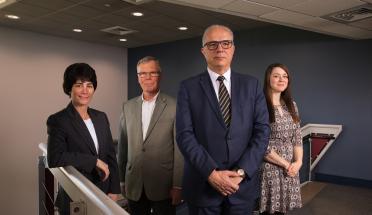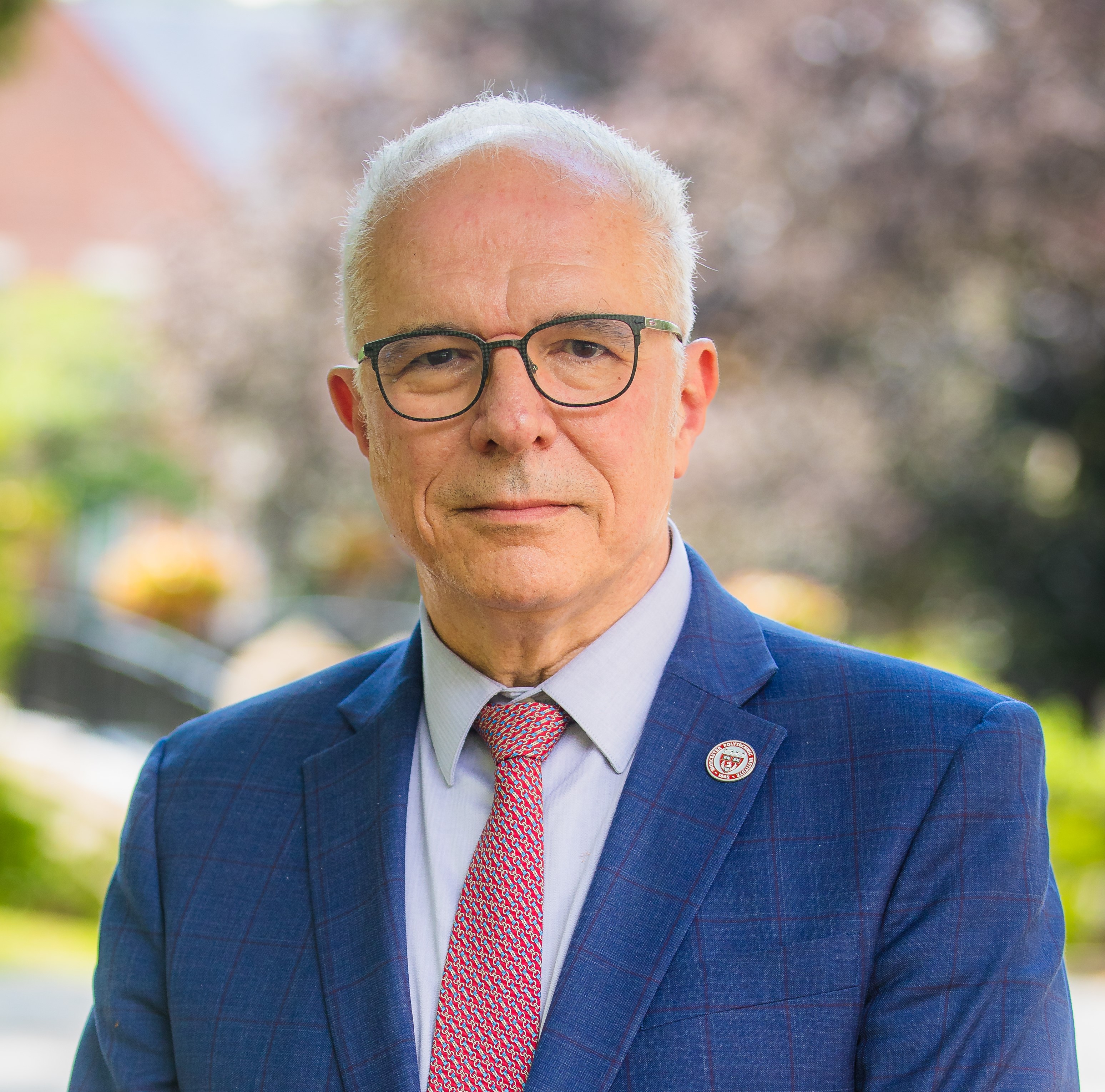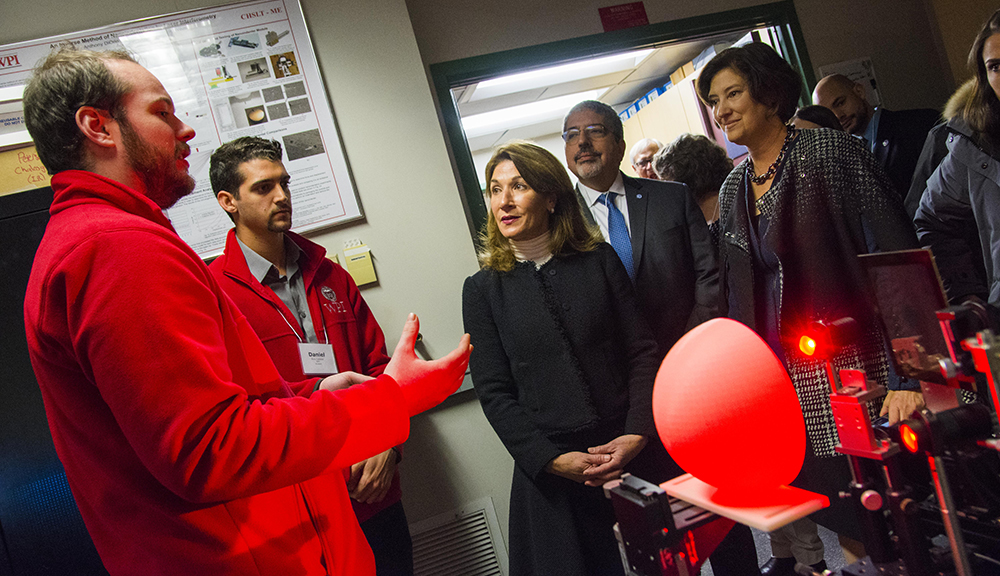The Research Solutions Institute (RSI) at WPI is implementing new initiatives to bolster the university’s research and has brought on new professionals to help reach its goals.
Bogdan Vernescu, vice provost for research who oversees the RSI, is finding ways to increase research opportunities in line with the university’s Strategic Plan.
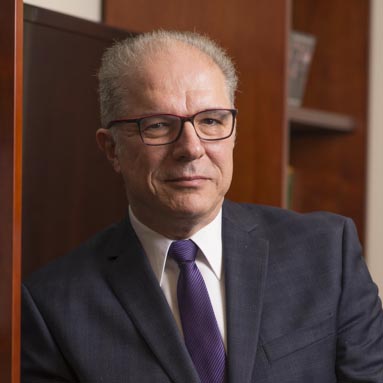
Bogdan Vernescu
Vernescu, who was appointed to the position of vice provost for research in 2016, works to enhance faculty research efforts and increase support for research at WPI from government agencies, corporations, and foundations. His responsibilities include supervising the operation and nonfinancial support of WPI’s research enterprise, including oversight of university-wide research institutes and centers, and the offices that administer research sponsorship and intellectual property and innovation.
Vernescu says that the funding landscape is changing more rapidly than in the past. “New opportunities come along, with short notice, and we need to be more agile in matching them with our faculty members’ research strength, and assemble the appropriate multidisciplinary teams,” he says. “At the same time we need to support existing research groups and find large funding opportunities for them.
“The other thing we noticed, as we were looking at the numbers and data during our strategic planning meetings, was that we have been putting a lot of effort into writing smaller proposals and not as much into large proposals. We disproportionally go after smaller proposals under $500,000 versus $3- to $5 million or more.”
Once they evaluated the data and identified the issue, the next question was "Why?"
“There were small proposals from small teams—mostly WPI-based—versus larger proposals from large, multidisciplinary teams of faculty across the country at other universities and community colleges and companies,” he says.
With larger research proposals in the millions of dollars, the level of complexity is higher, he explains, which makes putting the proposals together more challenging and complex.
“It is easier to submit small proposals than ones that need a lot of administrative oversight,” he says. “The model was not allowing for what our aspirations were.”
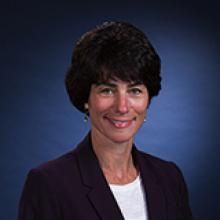
Ellen Grant Piccioli
Vernescu helped identify WPI’s research strengths in the Strategic Plan. He recognized that faculty who had larger proposals would need support putting them together, and hired two professionals for RSI a few months ago—Ellen Grant Piccioli, director of manufacturing innovation, and Michael Wright, research opportunity development lead. Colleen McShea also joined the RSI team last March as a grants specialist.
“Once you find the large opportunities, you need to provide support in putting things together,” Vernescu says. “You find big things out there being funded, and then put together multidisciplinary groups that work together and provide support to put the proposals together. You need someone to assemble everything in a way that makes sense and is coherent. It is a lot of administrative, logistical-type work that we need to help faculty with.
“Our goal is to put together large, center-type proposals and try to increase the number,” he adds. “We just hired two people who are training for this and right now we’re in the phase of figuring out who does what. They had to hit the ground running, and they are very involved with funding agencies, the state, and other partners to figure out what the opportunities are so we can respond to those.”
Wright, who was hired in August, guides the development of new multi-investigator research initiatives, centers, and competitive proposals; builds external partnerships with sponsors and collaborators; and develops opportunities for translational activities, working directly with faculty to help them find funding for their best ideas.
“We’ve had good reception and people are glad to know we’re here to help, when there wasn’t that help before,” Wright says. “They should ask for help at stage one in the process and contact us early and often if they are starting on the road to funding a new idea or want a higher level of support. They should contact us right away so we can be as helpful as possible. If we get a call three days before deadline to submit a proposal, that’s difficult. It would have been much better to start three months ago.”

Michael Wright
RSI provides services to all faculty in all departments in all topic areas, he explains. RSI staff has knowledge of grant opportunities and can help with the application process.
“In cases of larger, more ambitious, more complicated research projects, many times we find opportunities for more than one faculty member to team up,” Wright says. “We’re at a point right now in WPI leadership that we’re looking at larger, more ambitious endeavors. It is great if you can get those and target those, but we don’t want to send a message that we can’t help if the project isn’t over $3 million. There is a lot of good help for faculty to get projects funded.”
Wright, who came to WPI after 14 years at UMass Amherst working in a similar capacity, says it is pretty easy to compare WPI to other universities.
“At WPI, even though they are not bringing in large amounts of grants, I would say the caliber of faculty is just as good as any other research university,” he says. “There is tremendous potential for faculty to grow and I don’t think there are any obstacles to people’s capacity to do big things here. I am excited about that.”
Wright scans databases daily and sends emails to faculty about potential research opportunities; he works side-by-side with faculty members, plotting strategies for an approach to be competitive.
“For academic research and federal funding agencies, the percentage of getting funded is relatively low—in the 15 to 25 percent range,” he points out. “For many competitive opportunities, you might have to put in five different proposals to get one funded. The approach we’re taking is, it’s a matter of actually getting better at preparing proposals and getting funded. It is as much an art as it is a science—the art of telling one’s story.

Colleen McShea
“Storytelling is explaining the problem that needs to be addressed by science and how a scientific approach can go about it competitively,” Wright continues. “Scientists are all trained do the best science. They have to. It is what they are paid to do. But there comes a time to compete for the funds, and there is only so much money to go around. The art of telling the story is about putting the research proposal in the reviewers' minds and getting them excited about it so they want to fund it. It does not change the scientific merit by telling the story in a compelling way. It makes sponsors understand that ‘this is something we have to find funding for.’ If faculty can tell a story very well, it increases the odds quite a lot and takes you from a 20 percent chance [of getting funded] to a lot higher.”
Piccioli, who began in her RSI post in September, says she is excited about being part of a pivotal moment at WPI.
“Ultimately RSI is about enabling, supporting, and enhancing WPI’s outstanding faculty in enhancing our research, and thus positively impacting both society and our students,” she says. “RSI is really about helping our faculty be successful.
“I sense that we are at a pivotal moment at WPI engaging with stellar faculty and partners in collaborative, focused efforts that will elevate WPI’s research action, investment and impact.”
Piccioli is directing the engagement and expansion of WPI’s Manufacturing USA multidisciplinary, multiinstitutional and multicenter collaborative programs, and the development of new initiatives in the area of manufacturing innovation. Prior to WPI, she consulted in the MIT Leaders for Global Operations Program, and previously held leadership positions at Intel Corp., Hewlett-Packard, Compaq, and Digital Equipment Corp.
“WPI is the global leader in manufacturing innovation, engaging and attracting premier students and faculty, industry, academic, and government partners accelerating and enhancing high-impact research, tech transfer, and a thriving manufacturing workforce,” she says. “It's about students’ education and having a societal impact. All this stemmed from WPI’s Strategic Plan with a focus on research. It's another reason it makes WPI a fantastic place to be and a great time to be there, with its investment in research, and, in parallel, making WPI really a special place to be doing this kind of work.”
Manufacturing is one piece of that, Piccioli points out. She has a vision to make WPI the global leader in manufacturing innovation and a 21st Century Manufacturing Hub.
“I see it as a virtuous cycle of growth and investment that leads to enhancing WPI’s impact and further growth, so more people want to work with us,” Piccioli says. “WPI is engaging and attracting premier students, faculty, and industry—and academic and government partners—accelerating and enhancing three missions: collaboration, growth, and economic development.”
- By Paula Owen
